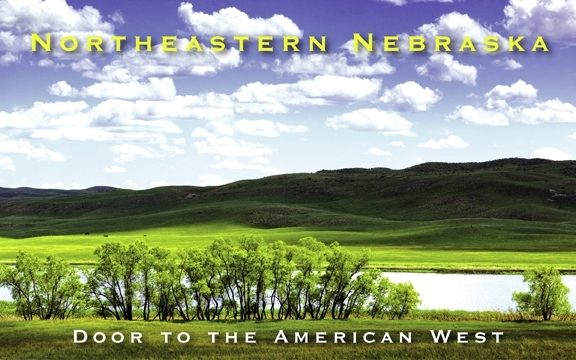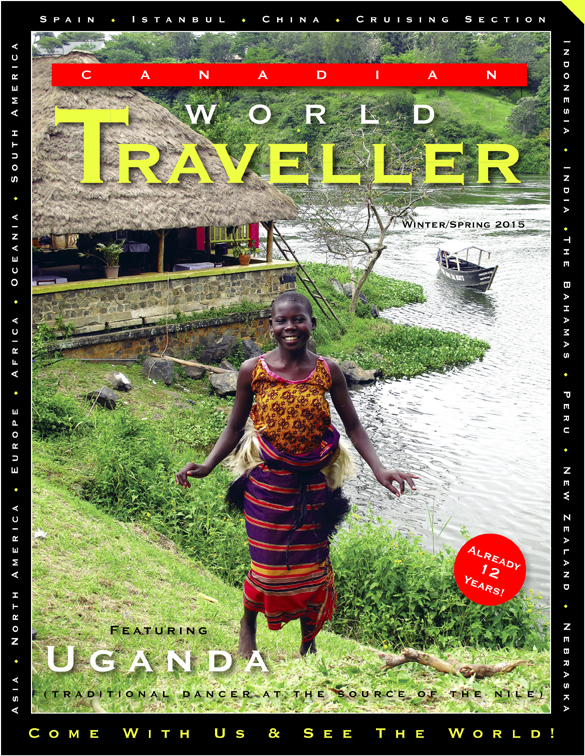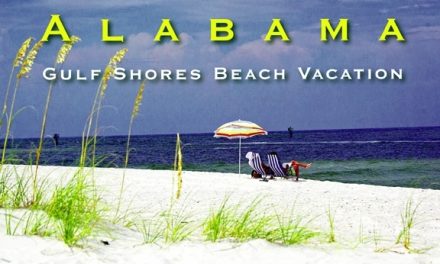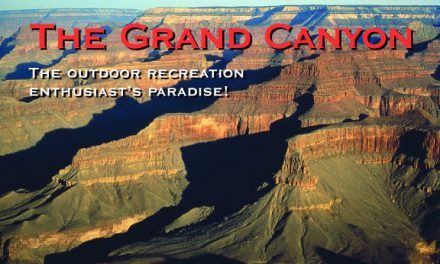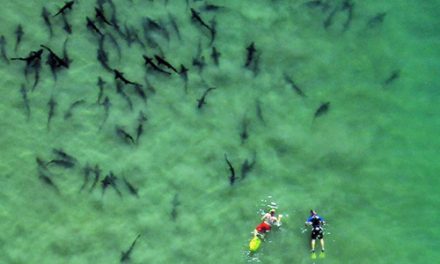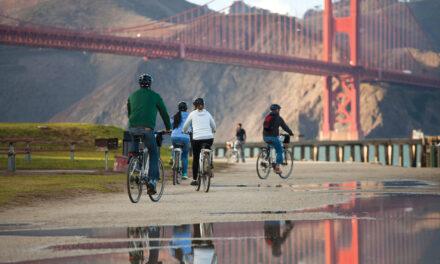Northeastern Nebraska
Door to the American West
by Anne-Marie Macloughlin

Lying between the Missouri and Platte Rivers, northeastern Nebraska is a panorama of prairie and breathtaking vistas. Below South Dakota and on the west side of Iowa, Nebraska is literally where the mid meets the west. Landing in Omaha in late September, we were greeted by temperatures in the high 80s and sunny prairie skies, a promising sight for our group as the focus of the tour was to experience two national parks, Niobrara and Ponca, both within a two hour drive of Omaha. Enjoying the warmth as we peeled off our jackets in the afternoon heat, it is hard to imagine the same vista reeling from the rage of a deadly tornado, which can happen this time of year.
First stop, Norfolk (pronounced Nor-FORK), where we stayed at the Norfolk Inn and Suites. After a welcome dinner at the on-site Veranda Steakhouse, I headed to my comfy room to bone up on some local history.
History Bites
In the early 19th century, Meriweather Lewis and William Clark travelled up the Missouri and opened up the west to American settlers. Sadly, this influx of pioneers resulted in the displacement of the native tribes, amongst them the Sioux from South Dakota, and the Omaha and Ponca in Nebraska. Forced onto reservations, there were few natives left anywhere in Nebraska by the end of the 1870s. Most of the new settlers were farmers, in an industry that has suffered a decline since the Great Depression and World War II. This is reflected in the shrinking population of small towns such as those featured in the 2013 movie ‘Nebraska’, shot in Plainfield, where the population hovers at around 2000. Looking at the deserted streets at 10am on a Tuesday morning, there is a sense of irony.
Arts and Entertainment
Not far from Norfolk, is David City, where the Bone Creek Museum of Agrarian Art is located. This adorable tiny museum is known for its quality exhibits illustrating depictions of rural life and landscapes. Focusing particularly on the agrarian roots of American communities, works by Canadian painter Denise Lamaster were also on show the day we visited.
The town of Norfolk has one very famous ‘export’ – The late Johnny Carson. Originally from Iowa, Carson moved to Nebraska as a child but never forgot his Nebraska roots. The Elkhorn Valley Museum is where the Johnny Carson Gallery can be found. Opened in 2002, it is THE destination for Carson superfans.
A Prairie Pompeii
In the little town of Royal, NE, lies a well-kept secret. Nearly 12 million years ago, hundreds of rhinos, camels, and other animals perished in a massive volcanic eruption and were buried in ash around the edge of a water hole, in what is now northeast Nebraska. Incredibly well-preserved skeletons of these great beasts are on show at the Ashfall Fossil Beds State Historical Park – which is just as well, as the concept of African animals in the prairies is hard to wrap your head around without significant proof. A great family outing, the beds are a chance to travel back in time and see what roamed the plains long before modern man. This site is of such importance, it was featured in author Bill Bryson’s “A Short History of Nearly Everything”.
Parks and Recreation
Niobrara State Park 1250 acres situated on bluffs overlooking the Missouri and Niobrara Rivers. For the botany enthusiast, this part of the state is where the eastern tallgrass meets the mixed grass of the Midwest, which gives this park its unique topography. From the lookout point at the main lodge, you can see South Dakota on the other side of the Missouri.
A heads up for planning your stay – Niobrara proper is a one-horse town with minimal amenities. When asking about local stores, we were directed to ‘The Trading Post’, which sounded like an authentic experience but turned out to be a dimly-lit gas station/corner store and the only place open. Basic snacks and an odd selection of liquor shared the space with hunting knives, fishing accessories and strange souvenirs. There are no drug or grocery stores in the near vicinity, so plan well.
After spending the night in a wind-rattled cabin, it started to feel very pioneer-like for this urban tourist. Declining the early-morning bird-watching (5am start – brrrr), we headed out to the Kreycik Elk & Buffalo Ranch in the Niobrara River Valley. A working farm/ranch, we met Boomer the longhorn steer who thinks he’s a buffalo, got to pet Suzie, a bottle-raised elk who loves head scratches, and hand feed buffalo, whose big woolly heads will melt your heart.
Following the outlaw trail, on we went to Ponca State Park, 2300 acres on the south side of the Missouri River. At the main lodge, there is a resource and education centre for visitors, conference rooms, and gift shop. The accommodations reflect the style of the lodge, with palatial mini-lodges, some nestled around the well-stocked fishing pond. As well as the many miles of hiking trails, natural beauty and the river, there are a many outdoor ‘education’ programmes available. If you were hankering to learn tomahawk throwing, archery, and shotguns for beginners (I’m not making this up), then Ponca is the place for you.
Since Tolkien hit the big screen, the glamour of archery has appealed to many of us. Cloak billowing behind while you effortlessly draw your hand-crafted longbow with the accuracy of a laser, the reality was a little soggier. Unrelenting showers left the range muddy and waterlogged, kind of like we were. Still, under the expert tuition of Park Ranger Tyler, we all managed to hit the targets and not each other. A great upper body workout and some serious mojo made this the highlight so far.
Not as seductive was the shooting range, ‘generously funded by our friends at the NRA’, according to the plaque. Given the location, guns are the norm around here, with many visitors bringing their own (a fellow traveller proudly showing off his collection from home). After a short session of learning how to shoot a .22, our instructor informed us that children as young as 10 take lessons, with some of the older kids signing up for ‘Hunter’s Ed’. As much as one tries to understand the rural culture in certain US states, it is still cringe-making to hear about children –or anyone for that matter – learning how to stalk and kill wild animals in this day and age. With zero need to catch your own dinner, clothing or shoes, this form of ‘sport’ is not for everyone.
As a relaxing end to our tour, a boat trip at sunset was a great contrast to weapons training. As we observed waterfowl and even a young wild deer in the peachy sunlight, the appeal of national parks and the great outdoors seems clear. Well-prepared travellers can feel what it’s like to be ‘off the grid’, with erratic cell and wifi service and no phones in the cabins (or tvs in some cases). Peace, quiet, and solitude can be reassuring. For this urban warrior, however, you can keep the bug bites, the damp, and the feeling of total isolation.
www.visitnebraska.com

